From my life’s melody strings to becoming a luthier, there’s a transformative moment I trace back to – a seemingly insignificant guitar tailpiece failing mid-performance. As I grappled with this craft, I learned something astounding. The tailpiece, often seen as a humble piece in guitar craft, held an undiscovered potential that revolutionized my musical journey.
Hi, I’m R.M. Mottola. With my background in engineering, I found myself irresistibly drawn to the intricate art of lutherie. The deeper I immersed myself in the physics and mechanics of guitar construction, the more I found my traditional perceptions challenged. The hidden hero in these developments? An oft-overlooked component – the guitar tailpiece. Did you know that the humble tailpiece plays a pivotal role in shaping guitar tone? Intriguing, isn’t it? Prepare to have your understanding of guitars amplified as we unveil the true importance of tailpieces in this article.
Join me as we traverse the rarely trodden paths of guitar construction and sound manipulation, and delve into the detailed intricacies of tailpieces. We’ll journey from the basics of what a tailpiece is, to their profound impact on the tonal colors of your guitar, and by the end of this journey, you’ll be equipped to make a more informed choice on tailpiece selection.
Let’s unravel the subtle magic of tailpieces together!
Understanding Tailpieces
What is a Tailpiece?
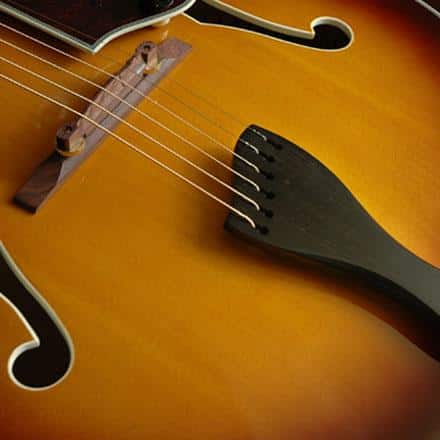
Delving into the hardware that forms the foundation of guitars, a significant component I’ve spent much time researching and understanding is the tailpiece. It may seem like a small part, often overlooked in the grand scheme of guitar construction, but its role, in reality, is substantial. From my perspective as a luthier and an engineer, a tailpiece is a piece of guitar hardware located at the end or base of a guitar. It connects the guitar’s strings to its body and serves multiple purposes that help dictate a guitar’s sonic character and playing potential.
The fascinating part about guitar tailpiece types is that each type directly impacts the string tension, sustain, and overall tone of the guitar. From my extensive research and personal experience crafting guitars, it’s apparent that different types of tailpieces have unique properties that affect the sound and resonance differently. A tailpiece can either be an integral part of the instrument’s structure or an add-on that enhances the design and tone. It accentuates the importance of careful selection while designing or modifying a guitar, allowing you to control the tone and playability to your personal preference. As we explore further into this topic, you’ll gain a deeper understanding of how tailpieces contribute to the construction and, ultimately, the sound of your guitar.
How Tailpieces Affect Guitar Sound
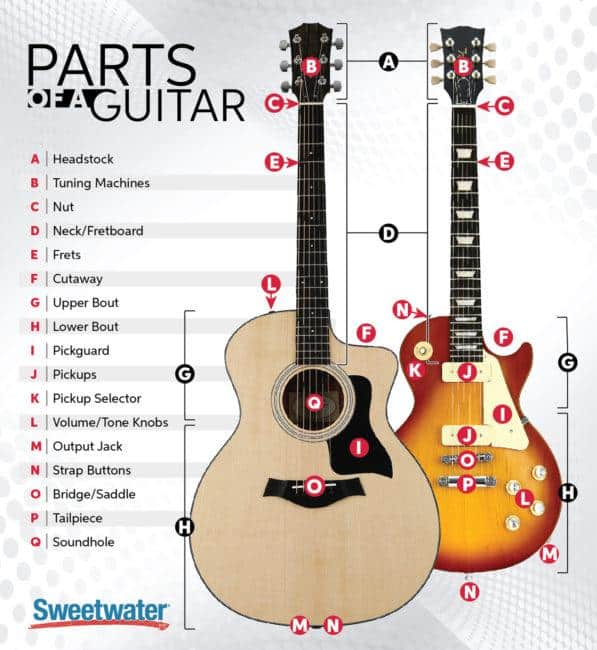
Reflecting on my experiences with instrument acoustics, the tailpiece’s role in influencing a guitar’s sound, while often undervalued, is immense. Its impact on facets like guitar sustain, guitar soundboard vibrations, and guitar resonance cannot be overlooked.
When you strum a guitar, the strings vibrate, creating waves that resonate within the body of the instrument. Here’s where the tailpiece comes in – its primary function is to anchor the strings, but the choice of tailpiece and its placement significantly contributes to the resonance of the notes and the overall clarity of your sound.
In fact, the tailpiece impacts how long a note can “hang” or sustain. A lightweight tailpiece typically aids in longer sustain, letting notes resonate longer and giving your sound a full, warm character. Conversely, heavier tailpieces tend to shorten the sustain, producing a punchier, crisper tone.
Furthermore, the soundboard, or the top piece of the guitar, vibrates in response to the strings’ motions, producing sound waves. A skillfully chosen and installed tailpiece can enhance these vibrations, essentially intensifying the fullness of the guitar’s voice. Finally, the tailpiece impacts the resonance, or how sound frequencies echo within the guitar body. A tailpiece that best matches your guitar’s specific construction and enhances this resonance will undoubtedly offer a more dynamic, richer sound.
Therefore, the tailpiece is not a mere fixture; it’s a significant variable in the tonal equation. As we examine different tailpiece types and comparisons in the next section, remember the profound influence the right tailpiece can have on your guitar’s sound and its ability to unleash its unique voice.
Tailpiece Types and Comparisons
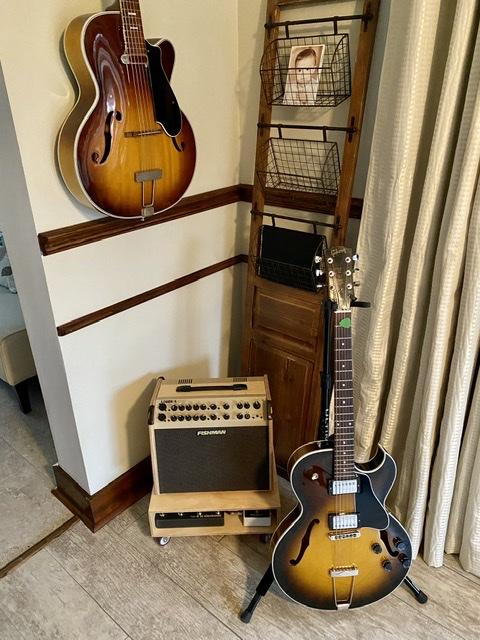
When I first embarked on my musical journey, the mystery surrounding the various tailpiece options felt much like stepping into an uncharted jungle. With every attempt at demystifying the different types, from the acoustic guitar tailpiece to the eclectic Bigsby tailpiece, it was a climb up a steep learning curve. Amid the process, I quickly discovered that tailpiece selection is no random choice.Each type, be it a trapeze tailpiece or a fixed hardtail bridge, comes with its unique tonal variance and construction nuances.
With a myriad of tailpiece types out there, understanding each’s unique impact can get daunting. But fear not, for herein lies the comprehensive guide to ease your tailpiece woes. My journey, fueled by endless curiosity and a passion for sound, has led me to experiment with a plethora of tailpieces on both acoustic and electric guitars. This shared knowledge aims to provide you with unique insights and comparisons, helping you make the perfect tailpiece choice for your beloved instrument.
Let’s begin with the trapeze tailpiece. During one of my earliest experiments, I quickly noticed that the trapeze tailpiece tone was generally warmer due to less string tension. It’s worth noting, however, that this specific tailpiece may not be for everyone. The reduced tension can influence playability, often making bends and vibrato more challenging to execute.
Next on my list was the fixed hardtail bridge, a common feature on many solid body electric guitars. Offering increased sustain, this type had a remarkably resonant tone, mainly due to the strings running directly through the body, increasing their vibrational energy transfer. If tonal longevity is your preference, a fixed hardtail bridge might well be your ideal match.
Stoptail bridges, on the other hand, diversely modify the instrument’s tone. Although similar to the fixed hardtail bridge in design, the stoptail bridge incorporates a separate piece on which the strings rest, altering how the strings vibrate and affecting the guitar’s overall resonance.
The Bigsby tailpiece was an unexpected yet delightful discovery. Primarily found on hollow body guitars, this type facilitates a unique tremolo effect, often described as the ‘shimmer’ of a guitar’s tone, but tends to reduce the sustain, a trade-off worth considering.
It was surprising to note how differing the tones were when comparing bridge pins vs tailpiece as well. Choosing between these two primarily rests on personal preference and playing style. Some guitarists resonate more with the traditional tone of the bridge pins, while others prefer the slight alteration in tone and sustain that a tailpiece offers.
Hollow body guitar tailpiece types, such as the aforementioned Bigsby and trapeze styles, can also significantly impact the overall tone, characterized by the amplified acoustic tones they produce. Tailpiece selection on hollow bodies can drastically shift your sound – from country twang to jazz smoothness, depending on your chosen type.
Reveling in the immense power the humble tailpiece holds over an instrument’s tone has been a fascinating odyssey for me. And now, with these comparison insights at your fingertips, your path in making the perfect tailpiece choice should become much clearer. Your unique tone is out there, and in the following chapters, you’ll be guided on how to find it, install it, and adjust it to suit your individual style.
Making the Right Choice
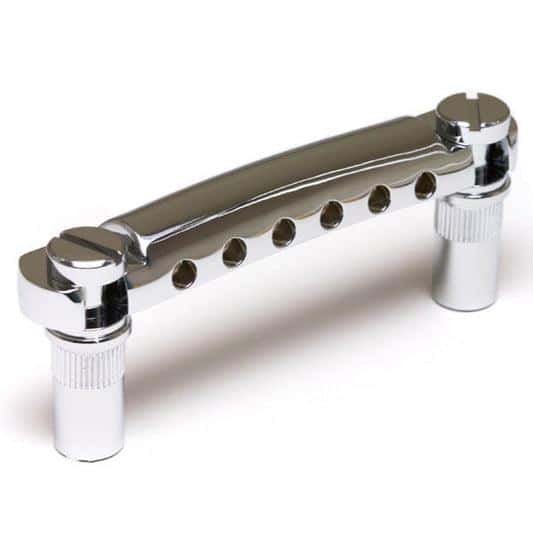
It’s a common misconception that the only critical parts of a guitar are the body, strings and fretboard. This couldn’t be farther from the truth. Tailpieces, although seemingly small, have a significant part in guitar construction. The effect they have on the tone is pronounced, largely due to how they transfer string vibrations to the guitar’s body. Hence, deliberately choosing the right tailpiece is crucial to optimize your guitar’s sound performance and playability.
Speaking from years of luthier experience and countless guitar modifications, I can affirmatively say that even the smallest detail like the tailpiece can make a significant impact on your playing. The difference in tone between a wooden and a metal tailpiece can be night and day. The same is true whether you opt for a trapeze tailpiece or a Bigsby on an electric or an acoustic guitar. But, let’s be honest, not everyone can differentiate a trapeze from a Bigsby, or understand the tonal effects of wood versus metal.
Wooden or metal, trapeze or Bigsby, acoustic or electric – choosing the right tailpiece can be overwhelming. But, what if you had an experienced guide navigating you through it all? As a member of the New England Luthiers group, I have provided many budding musicians and luthiers with advice that not only improved their instruments but also their playing experience. I’d like to do the same for you through this chapter, guiding you on how to choose the right tailpiece.
Understanding the difference between many available options is crucial. The trick is to match the tailpiece with your guitar style, construction and, most importantly, your desired sound output. Are you after a warmer, deeper tone or a brighter, crispier one? Or, are you seeking stability over sustain? Your pick between a wooden tailpiece or a metal one can be the answer. Keep in mind that a wooden tailpiece generally provides a warmer, mellower tone while metal counterparts provide a brighter, clearer tone.
Now, if sustain and stability are your priority, then neither a trapeze nor a Bigsby is what you need. Instead, opt for a stop tailpiece. However, if you prefer slightly warmer, vintage tones and appreciate the aesthetic charm they bring, a trapeze or a Bigsby can be your best bet.
The bottom line and my best luthier advice: No single tailpiece can suit every guitarist’s needs. It’s all about what you are aiming for and how much you understand your guitar. This chapter has aimed to help you understand your threads, their differences, and their impact, making your tailpiece selection less overwhelming and more strategic.
Whether you’re a novice or an experienced player, always remember that tailpiece choice doesn’t have to be a compromise. If chosen carefully, and for the right reasons, it can drastically contribute towards tone improvement, creating a sound that not only you but everyone listening will appreciate. And that, for me, is the essence of making music and crafting guitars.
Tailpiece Installation and Setup
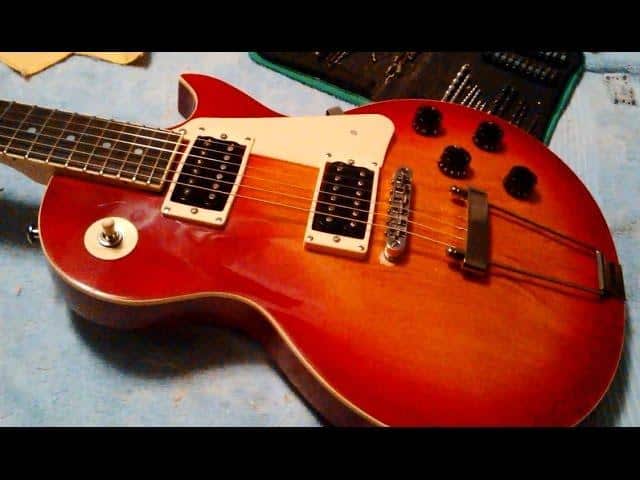
Having understood the types, function, and possible impacts of tailpieces on your guitar’s tone, the next pivotal step in our journey is a practical one – the actual tailpiece installation and guitar setup. This might appear daunting initially. But don’t fret. I am walking with you on this path, ready to lend a helping hand borne out of my years of experience, expertise, and insight.
Installation of a tailpiece might seem an intimidating process, but what if you could receive step-by-step guidance that makes it a breeze? What if the dread of replacing your tailpiece could be replaced by the assurance of amazing sound and intricacies of tone after change? Intrigued? Then read on to find out more.
Hands-on experience from my own workspace has imparted me invaluable lessons in tailpiece installation. My goal is to simplify this process for you, ensuring that the setup of your guitar tailpiece is as seamless as playing your favorite tune. It’s all about being attentive to the fine details, and having patience and an understanding of the role each component plays. Remember, this is not a race – taking your time ensures a better outcome and a richer sound.
Depending on the type of tailpiece you have selected, the installation process may vary. However, there are common steps such as removing the old tailpiece, aligning the new tailpiece properly with the bridge, and making sure that it’s affixed securely. Then setup involves adjusting the tailpiece height and string tension, which are critical factors affecting performance and tone. Each step is vital to ensure that the guitar returns a sound that resonates with your unique sense of music.
Through my journey, I have realized that, often, it’s the imperfections we bring in our technique that create the perfect sound. And a part of that beauty is introduced by us tinkering with and setting up our own machine of melodies − the guitar. I want to help you become more comfortable and confident in your ability to tweak your guitar setup and enjoy the effects that come with it.
Inspired by this understanding, our next section in the article covers frequently asked questions on the subject, which will further clarify any queries you may have about tailpieces. Stay tuned, and let’s continue unravelling the secrets of tone, one string at a time.
FAQs
What is a guitar tailpiece?
How does a guitar tailpiece affect tone?
What considerations go into constructing a guitar tailpiece?
Can I change the tailpiece on my guitar?
Conclusion
Ever thought that a simple guitar detail like the tailpiece could have such an overarching influence? Let’s summarize and talk about the importance of tailpieces one last time. Throughout the journey of this article, we have drilled into the role of tailpieces in a guitar’s construction and tone production. A seemingly small component, the tailpiece, in reality, plays a critical role in the guitar’s sonic character.
Understanding the function of the tailpiece, comprehending the impact it has on sound, and identifying the various types helps make an informed decision to enrich your guitar playing experience. Interestingly, each tailpiece offers a unique tonal characteristic. This aids in crafting a personalized tone that caters to your desirable sound.
Sharing my passion and knowledge about the role of tailpieces in guitar construction and performance has been an honor. I hope that the insights I’ve shared through this piece will help you enrich your guitar playing journey. Remember, every detail matters when it comes to a precision instrument like the guitar. So, do not overlook the importance of tailpieces. Embrace their potential and witness the transformation in your guitar’s tone and performance.
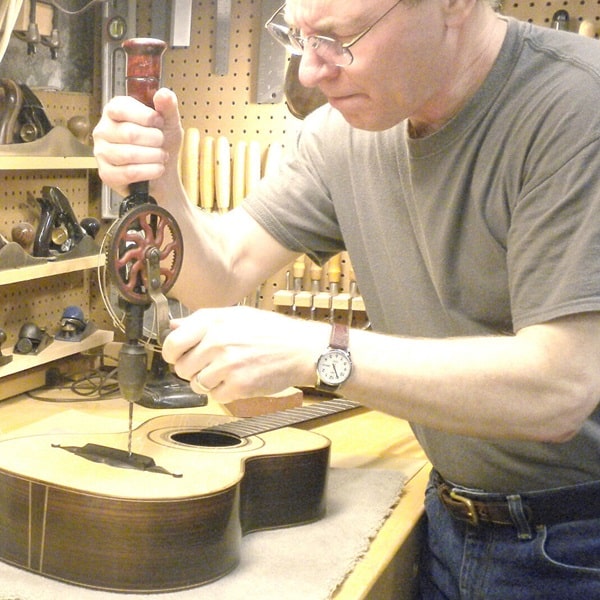
R.M. Mottola, an engineer-turned-luthier, revolutionizes stringed instrument design with his deep focus on acoustics and ergonomics since 1994. As editor of the Savart Journal and a key contributor to American Lutherie, Mottola merges science with artistry in lutherie. He enriches the field with his extensive knowledge, shared through his Liutaio Mottola website, making him a beacon in the world of modern instrument craftsmanship.

I one of these people who hates bridge pins and acoustic guitar with a passion. There’s a lot of mythology when it comes to guitars. I would like to see you do YouTube video comparing identical models of guitars but one would have a pinned bridge and the other would have a tailpiece. A blindfold would be pretty cool.
I am primarily a bass player so I’ve got to observe the neurosis of a lot of guitar players as they fall for the hype by the guitar industry and amplifier industry and tube industry. I would sacrifice a little bit of tone for playability and prevent belly bulge which every guitar will eventually experience.
a guitar designer by the name of Dan DeMars has his guitars strung through the back. I would like to see him sell deeper body guitars that are also strong through the back. He says that stringing through the back on an acoustic guitar puts more downward force on the bridge saddle. Could you confirm that?